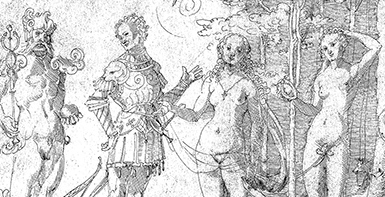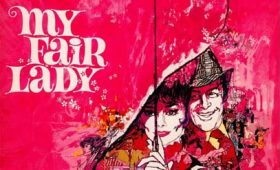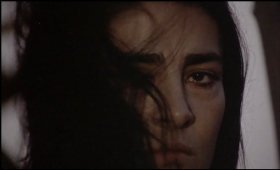Hans Baldung Grien (1485/85-1545) sketched a “Judgment of Paris” for a mural or tapestry that, if it ever was executed, is now lost. The preserved ink drawing shows that even late in his career, in the middle of the 16th Century, certain Medieval elements of the classical mythological iconography were lingering.
The sketch (Paris, Bibliothèque Nationale, Cabinet des estampes; Louvre, inv. nr. 36) is shown in a plate from C. Koch (1941), Die Zeichungen Hans Baldung Griens (Berlin), nr. 141. I catalog it in OGCMA as ParisJudgment2.0034_Baldung.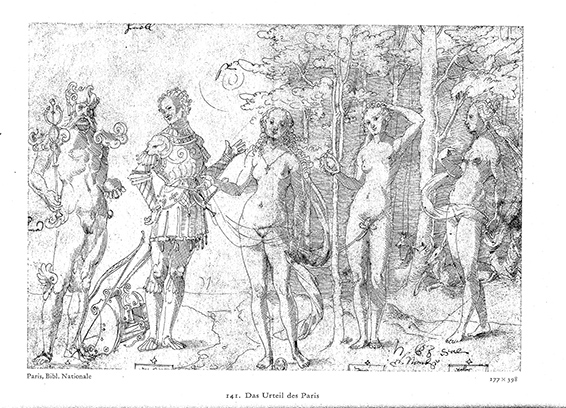
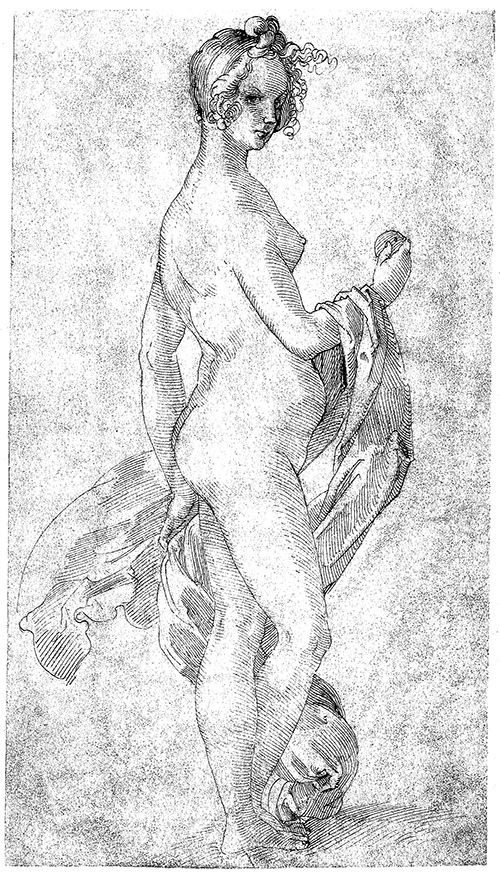
Somewhat reminiscent of Botticelli’s grand masterpieces, “Primavera” and “Birth of Venus”, is Baldung’s formatting of the figures across the frame. Baldung’s Venus has the centrality and the posture here of Botticelli’s Birth, though Baldung’s goddess exposes her upper body as she reaches for the apple in Mercury’s hand.
Captions at the feet of the five figures are written in Baldung’s own hand (according to Koch), identifying the goddesses whose iconography is left by the artist somewhat uncertain. Thus, Baldung places Venus front and center in the composition, and Paris’ hand gestures — though Koch sees his posture as “doubtful (die Gebärde des Zweifels)” — that Venus should win the coveted apple. Juno holds the mirror in her right hand, an attribute commonly given to Venus but not here. Minerva, identified as “Pallas” in the caption, is on our far right and flanked somewhat unexpectedly in the composition by woodland animals a viewer might associate with Diana in other contexts. Paris’ wearing of knight’s armor connects Baldung’s imagination to countless Medieval “Judgments” that had come before; and Mercury’s whispy, magical garb, similarly, suggests the artist’s conception of the scene is steeped still in older times. Indeed, Baldung’s Mercury might have its icongraphic roots in Mercuries a century and more older than Botticelli’s who occupies the left-most spot in the Primavera.
